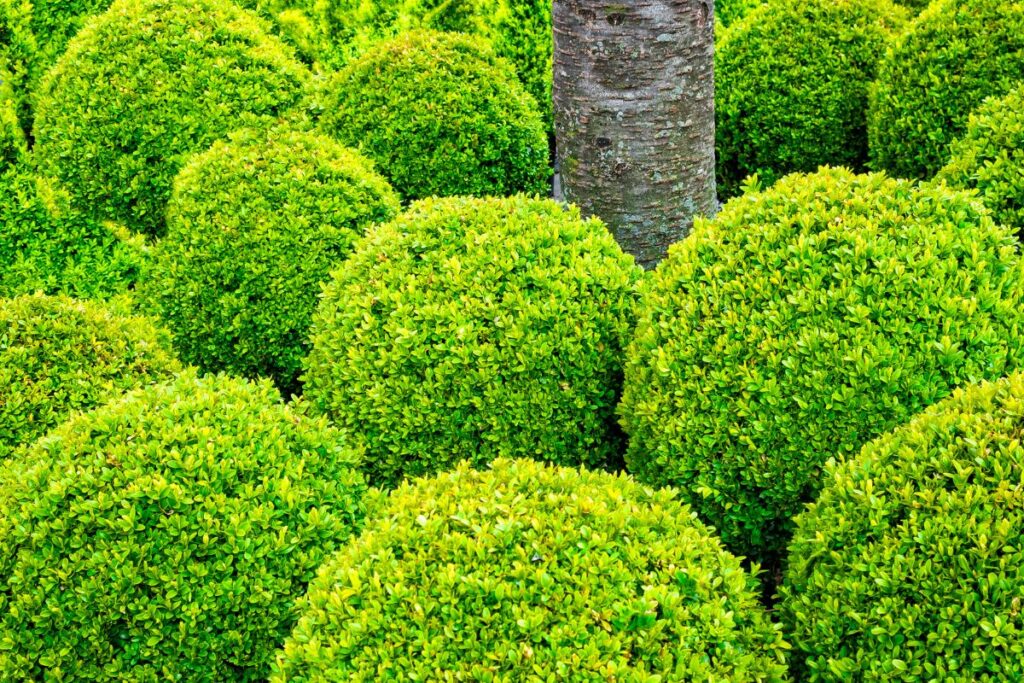Planting shrubs in your Illinois garden is about more than just making your yard look nice. Shrubs can offer privacy, create habitats for local wildlife, and change with the seasons to add interest. While some gardeners might go for high-maintenance options, there are plenty of easy-care shrubs that do well in Illinois’s climate.
The trick to picking the right shrubs for your Illinois garden is choosing hardy varieties that can handle the local weather. Whether you have a sunny spot or a shaded area, there are shrubs that will fit your space.
Here are 10 great shrubs that thrive in Illinois’s USDA zones 6-9.
Burning Bush
The flaming bush, which is widely grown for its fiery red fall foliage, thrives in zones 4 through 8 but adapts well to other US Hardiness Zones. Under ideal circumstances, this shrub, which is well-known for its consistent growth rate, can grow up to 15 feet in height. It is a popular choice for landscaping use in places that are prone to erosion because of its outstanding soil stabilizing root system. The size and color brilliance of different types vary slightly.
Hydrangea
Known for their eye-catching clusters of flowers, hydrangeas are typically planted in the early spring or fall so that their roots can take root before the harsh summer or winter weather. Throughout the year, these plants provide a variety of visual interest with their seasonal color changes, which frequently depend on the pH of the soil and vary from pink to blue or vice versa. The well-liked ‘Endless Summer’ cultivar is a dependable option for consistent seasonal color because it blooms on both new and aged wood.
Boxwood
Because boxwood grows slowly, it’s a popular choice for landscaping because it can be used to create hedges and topiaries that don’t need to be trimmed as often. This evergreen shrub may grow in a range of temperatures because it is well suited to US Hardiness Zones 5 through 9. Because deer are less likely to nibble on its dense leaves, one exceptional species, ‘Green Velvet,’ grows to a compact size and exhibits amazing resistance to common pests like deer.
Viburnum
Viburnum displays striking seasonal color shifts; many types bear berries that turn black as they ripen, adding interest to the plant throughout the year. Well-known cultivars like ‘Blue Muffin’ have bright blue berries and beautiful green leaves. Viburnum grows well in US Hardiness Zones 3 through 9, so it’s a good choice for a variety of climates. Some cultivars exhibit resistance to prevalent pests, providing benefits in terms of upkeep.
Spirea
A hardy shrub that’s frequently used in landscape design, spurra grows quickly, which makes it a great option for gardeners looking for immediate results. This plant comes to life in the spring with vibrant blooms that are usually pink or white. As the seasons change, the foliage of the plant changes and turns crimson or orange in the fall. A well-liked option is the ‘Goldflame’ type, which has compact growth, strong disease resistance, and coppery-yellow springtime leaves that turn a vivid crimson in the fall.
Forsythia
Because it grows well in US Hardiness Zones 5 through 8, forsythia is climate-adaptable. This shrub, which is well-known for growing swiftly, can grow to a height of 8 to 10 feet rather quickly. Because of its shallow and fibrous root system, the plant can readily spread throughout many types of soil. However, this also means it requires regular watering, especially during dry spells, to maintain its vigorous growth and ensure the plant remains healthy throughout its lifespan.
Arborvitae
Commonly found in various landscapes, Arborvitae thrives in multiple US Hardiness Zones, typically ranging from 3 to 7. These trees are a dependable option for gardeners looking for low-maintenance foliage because of their strong disease resistance. When considering planting, early spring or fall are the ideal times to introduce arborvitae to the landscape because these months allow its root system to establish in milder temperatures.
Witch Hazel
Given its reputation for being resistant to illness, witch hazel is a dependable option for landscapers. It grows well in US Hardiness Zones 3 through 9, where temperature variations are tolerated. Well-known cultivators like ‘Arnold Promise’ produce yellow blooms in the late winter, and ‘Diane’ produces eye-catching scarlet blossoms. Its resistance to common plant diseases and adaptability to various zones emphasize how suitable it is for a variety of garden settings.
Red Twig Dogwood
Red Twig Dogwood is well-known for its vibrant foliage all year round. Its green leaves turn scarlet in the fall, and its striking red stems in the winter contrast sharply with the snow-covered surroundings. Planting in various US Hardiness Zones is appropriate; however, it thrives best in zones 3 through 8, where it can be enjoyed all year round. With a modest growth rate that reaches its full height over several years, this hardy shrub is suitable for a variety of garden settings.
Rhododendron
Planting rhododendrons in cooler months—typically fall or early spring—allows their root systems to establish before summer heat strikes and promotes optimal growth. Although they are tolerant of a variety of temperatures and are hardy in U.S. Zones 4 through 8, they do best in slightly acidic, well-drained soil. Rhododendrons have a shallow, fibrous root system that makes plants vulnerable to drought while also ensuring that they efficiently absorb nutrients and need regular watering for healthy growth.









